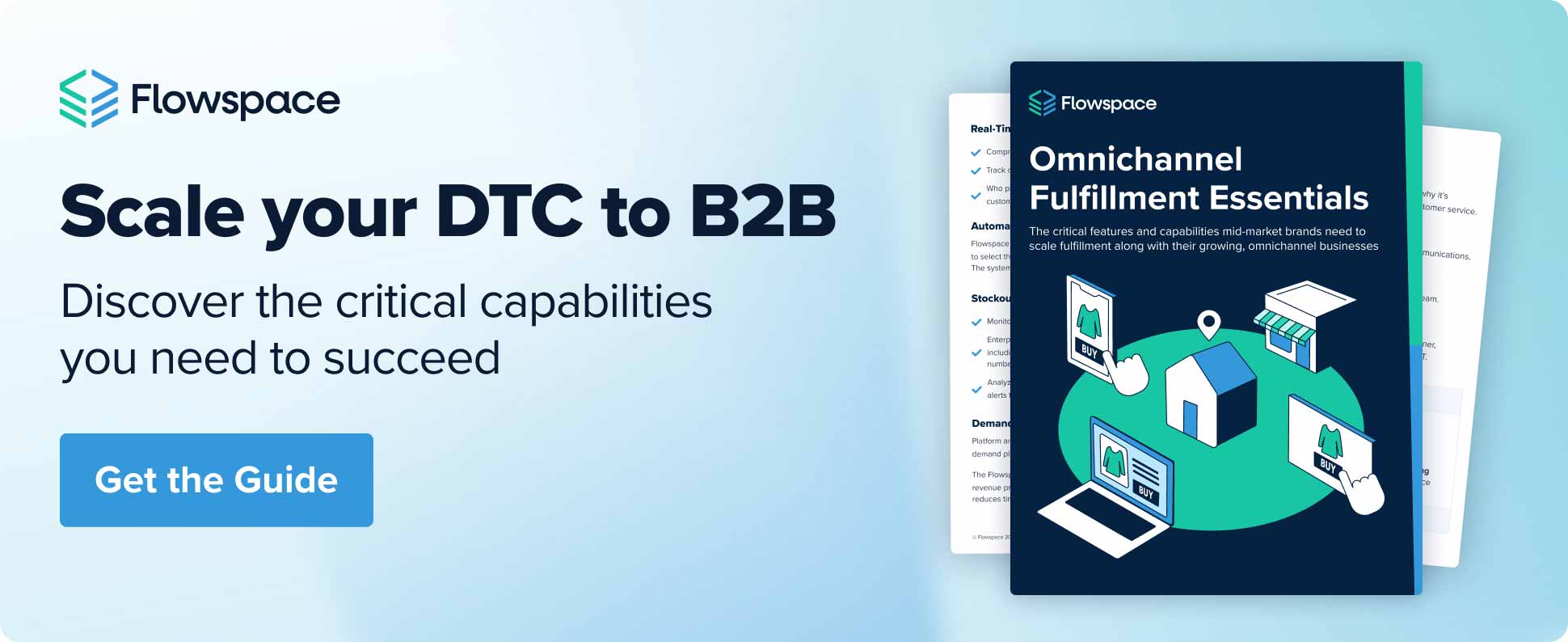It wasn’t too long ago that online shopping was a foreign concept as the digital age first exploded. Now, the trend is the norm, and omnichannel retailing is the next commerce frontier. As new technology and accessibility open up more possibilities, the question is: what does omnichannel retailing mean for the future?
First, a definition. Omnichannel retailing is a multichannel approach that focuses on providing a seamless customer experience, no matter where or how they’re shopping. Combining online mediums with offline touchpoints, omnichannel retailing gives customers the chance to discover products via multiple online channels, view products online, and oftentimes pick them up in a physical store. It ties all the elements of multi-channel retail, which involves social media, paid ads, and store apps, sometimes with an extra element of an in-person experience.
The majority of customers consider omnichannel retailing part of their regular shopping experience. Experts consider Gen Z (people born between 1997 and 2012), a generation that’s grown up with digital integration, to be the greatest influence on shopping trends today. For retailers, it’s in their best interest to use customer data to their advantage and align their sales channel to retain and attract new customers. The information retailers request both online and offline are part of an effective strategy to keep connected and ultimately, sell more.
To understand where the future of omnichannel retailing is headed, it’s necessary to first look at how it’s used today, how it affects the customer journey, and how omnichannel order fulfillment will continue to benefit businesses.
How Prevalent Is Omnichannel Retailing?
Omnichannel retailing is part of the shopping experience for nearly every industry. From clothes to groceries and electronics to household items, implementing an omnichannel strategy gives consumers what they want, when they want it.
According to market research, 82% of digital shoppers appreciate the ability to check the availability of a product prior to visiting in-store, and 70% of U.S. online shoppers say they’ve bought items online to be picked up in-store at a later time convenient for them. The ability to perform product research from the comfort of their own homes and avoid crowds to pick it up directly from the store is becoming a preferable way to shop.
For retailers that provide an omnichannel strategy, they’re able to retain 89% of their customers on average versus 33% for companies that do not have this type of plan in place. In order for omnichannel to continue its momentum and success in the future, traditional retailers must streamline their operations and create a holistic approach to meeting customer demand.
This includes focusing on factors such as convenient store location, product quality, brand competitiveness, customer support, and personalization. Consumers have a wide variety of choices now and are willing to shop around, either online or in-person, to find the best value. It’s up to retailers to provide a consistent, integrative approach to their selling strategy to maintain customer loyalty.
How Omnichannel Retailing Affects the Customer Journey
The future of omnichannel retailing shakes up the linear path of the customer journey and allows the customer to interact at many different touchpoints with the retailer. Furthermore, the same customer may have a different purchasing journey each time, switching between online and offline channels based on deals, convenience, or any number of factors.
Two of the biggest factors customers consider today are speed and convenience. How fast can they get their products and how convenient is it for them to order, have them delivered, and/or pick them up? The pandemic caused a momentous shift in the customer journey as brick-and-mortar stores were closed or limited in their in-person shopping schedules.
As a result, shoppers already buying online increased their number of purchases. And those used to getting their goods in-person adapted to online delivery or curbside pickup. Therefore, retailers must provide the same quality of service, brand positioning, and customer experience across all channels. EDI for Retail allows these stores to fulfill orders directly to the customer via digital retail channels.
Key Trends of Omnichannel Retail and What It Means for Order Fulfillment
The number of online shoppers has increased exponentially over the past five years. By the end of 2021, it’s projected the number of U.S. shoppers who have browsed products, compared prices, and/or bought merchandise at least once online will reach 230.5 million. This is largely due to the boost from technology over the years.
It’s not only a retailer’s online store that is driving traffic and sales, a brand’s social media presence, app capabilities, and other technology offerings are leading more people to start their purchasing journey on their smartphones or other digital devices.
Social Media
Facebook and Instagram evolved from being purely social networks used to engage with friends, families, and colleagues and became robust platforms for retailers to sell their products. According to a recent study, 72% of Instagram users say they’ve made a purchasing decision after seeing a product on Instagram.
Shoppers are being influenced by brands and by the people they follow to make quick-to-click purchases, many times without having been previously familiar with a brand or retailer. And just as quickly as Instagram shopping took off, there’s more social technology emerging across additional platforms like TikTok.
The newest social media platform attracts younger audiences who are influenced differently than older generations in regards to when, where, and how they make purchases, and TikTok is implementing new offerings, like its partnership with Shopify, that make it easier for retailers to reach this growing social media audience to boost sales and improve brand recognition.
Store Apps
Store apps are a significant part of omnichannel retailing by allowing customers to store their information and receive a convenient, personalized shopping experience wherever they are. Retailers that set up rewards programs or memberships for their customers also have greater retention and resell advantages.
The usability and integration of store apps with the greater omnichannel experience are important. Customers want to easily branch out to see nearby stores and check out social media channels all from one central source. A successful example is the beauty brand Sephora.
Sephora initiates omnichannel experiences for customers that connect their online purchases to their in-person visits. Customers can use their smartphone app or in-store tables to log into their personalized Sephora account to research products, virtually try them on, and easily add to their digital or physical shopping cart while offering a seamless experience across all channels.
Virtual Reality
Virtual reality (VR) is one of the top technologies used by retailers using omnichannel strategies. The ability to try-before-you-buy VR allows customers to experience how a product will look, fit, or add value before making a purchase.
Whether it’s makeup, clothes, or interactive experiences for hotels and restaurants, customers want an inside peek at what to expect before making a purchase. This taste of virtual reality must then live up to consumer expectations in person. A disconnect instantly causes distrust in shoppers and discourages them from purchasing from the brand again.
Optimizing Warehousing and Fulfillment As Part of an Omnichannel Strategy
When retail businesses align sales channels to create a positive customer experience, they benefit in multiple ways. They attract a wider audience, increase profits, and boost customer loyalty. Retailers must capitalize on the power of omnichannel retailing and adapt their businesses to meet the demand of shoppers today.
One of the most important parts of achieving a successful omnichannel strategy is optimizing fulfillment. Having visibility in supply chain logistics and creating a flexible supply chain strategy aids in streamlined fulfillment services, which in turn leads to improved customer satisfaction. The promises marketed through social media and store apps must be supported by quick, convenient, and quality delivery. The Flowspace platform allows retailers to easily connect all sales channels into one central place through integrations with marketplaces, retail stores, and shopping cart integrations that make it easy to see and manage all ecommerce activity in one place.
Flowspace allows retailers to stay ahead of low inventory and keep items in stock thanks to low inventory alerts and real-time visibility. It also allows retailers to review which channels are working best and which may need attention as they optimize their sales strategies. Streamlining omnichannel operations through Flowspace also leads to insights and recommendations about product allocation, as storing products closer to where customers are located helps meet fast shipping demands and keep costs low. The technology and solutions allow retailers to keep pace with changing customer demands, freeing up time to focus on sales priorities while fulfillment is handled.
The future of omnichannel retailing and fulfillment isn’t only about providing customers with various routes to purchase but making sure the experience across the board is consistent. The ecommerce market is fast and competitive, and it only makes sense to have a partner that can take care of fulfillment in a quick, convenient, and quality manner.
Partnering with Flowspace for fulfillment leaves retailers more time to focus on growing their business. Retailers can reduce storage and shipping costs, grow their orders more quickly, increase their profits, and explore new ways of incorporating green practices to reap the benefits of sustainable logistics. To learn more about fulfillment solutions for omnichannel retailing, contact us today.







